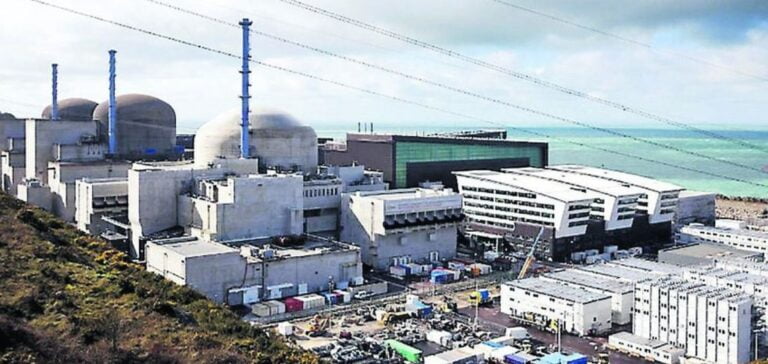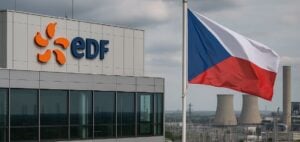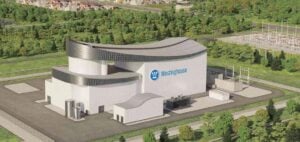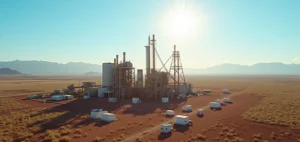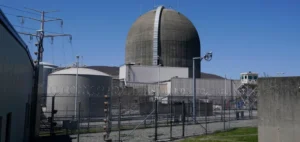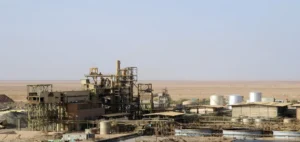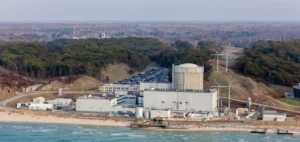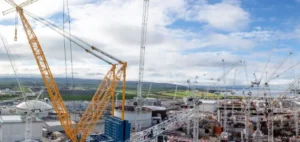The Flamanville EPR reactor, the first of its type to be built in France in 20 years, has just finished loading its fuel, marking a crucial stage in its commissioning. It’s also an advance in the French nuclear sector. With a capacity of 1,600 megawatts (MW), this reactor will be the most powerful in the country, and will be able to supply nearly three million households. Twelve years after the initial deadline, the ASN (French nuclear safety authority) has given the go-ahead for this long-awaited milestone. EDF teams expressed their pride and emotion at the event, highlighting the challenges they had overcome throughout this complex project.
Precise fuel loading
Loading the fuel required meticulous preparation. For a week, some 30 operators worked around the clock to insert around 60,000 rods – thin tubes containing uranium pellets – into the reactor vessel. This operation, carried out under 20 metres of water to protect against the effects of radioactivity, was a success, enabling the vessel to be closed and the boiler to begin to build up pressure and temperature. Flamanville 3 Operations Manager Grégory Heinfling described the moment as a mixture of emotion and concentration, necessary to ensure safety and smooth operations.
“Some of us shed a little tear”, others “jumped for joy”, we even “hugged a bit.”
Perspectives and objectives
Full commissioning of the reactor is scheduled for the end of the year, following a series of tests and approvals. The first nuclear fission reaction, or “divergence”, is expected at the end of June. Thereafter, EDF will gradually reach different power levels, with “coupling” to the electricity grid scheduled for the summer. The Arabelle 1000 turbine, the most powerful in the world, will then come into action to generate electricity. A final notice will be required to reach 100% power, which is scheduled for the end of 2024. For future stages, the reactor will have to pass through several stages before reaching full capacity. In particular, the build-up of boiler pressure and temperature is a critical phase, requiring close monitoring and rigorous testing. The long-awaited moment of “divergence” will mark the start of nuclear fission, a key milestone for the project. Once this stage has been reached, the reactor can gradually be connected to the grid, delivering its first electrons and contributing to France’s electricity supply.
Challenges and controversies
The Flamanville project has been marked by numerous challenges, with the cost quadrupling to 13.2 billion euros according to EDF. Environmental groups such as Sortir du Nucléaire continue to question the reliability of theEPR, criticizing its hasty commissioning. Due to numerous delays and cost overruns, questions persist as to the viability and safety of this type of reactor. However, project manager Alain Morvan assures us that the plant is of high quality and promises safe operation. He acknowledges the “painful moments” but underlines the resilience of EDF’s teams, who have always bounced back from difficulties. The next major step will be to ramp up the reactor, with an initial production phase at 25% of full capacity. At this point, the reactor will be connected to the power grid, and the Arabelle 1000 turbine will start spinning at full speed, producing electricity. The success of this phase will depend on a series of rigorous tests and the continued approval of the ASN. Full production is scheduled for late 2024, with the first maintenance visit scheduled for late 2025.
Implications for the future of nuclear power in France
The launch of the Flamanville EPR represents a crucial turning point for the French nuclear industry. As the country seeks to diversify its energy sources and reduce carbon emissions, new-generation nuclear reactors play a key role in this transition. The success of Flamanville could influence the decision to build other EPR reactors in France and elsewhere. The experience gained and lessons learned from this project will be essential for improving the design, construction and future operation of nuclear reactors.
The launch of the EPR reactor at Flamanville marks a major milestone for the French nuclear industry. Despite the many hurdles, the completion of fuel loading and the steps ahead illustrate EDF’s determination to bring this project to a successful conclusion, while promising high safety standards and stable, reliable energy production. As the world moves towards more sustainable energy sources, the success of the EPR reactor could provide a roadmap for the future of nuclear power.

